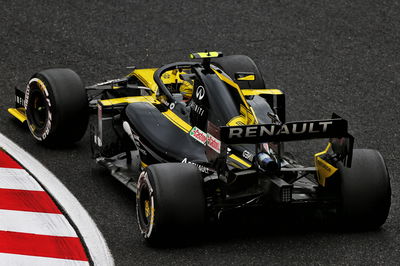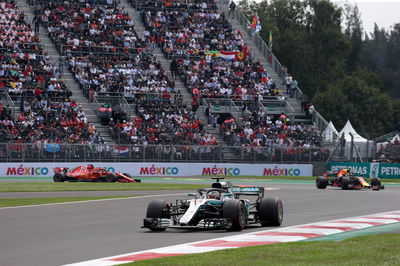Renault pleased with 2019 F1 engine development
Renault insists it is satisfied with the level of performance it has managed to achieve with its 2019 Formula 1 power unit, though it admits there is “room to improve”.
The French manufacturer came into the season confident about the gains it had made with its latest power unit and hoped it could close the gap to the top three teams following its fourth-place finish in the 2018 constructors’ championship.

Renault insists it is satisfied with the level of performance it has managed to achieve with its 2019 Formula 1 power unit, though it admits there is “room to improve”.
The French manufacturer came into the season confident about the gains it had made with its latest power unit and hoped it could close the gap to the top three teams following its fourth-place finish in the 2018 constructors’ championship.
Poor reliability hampered Renault’s start to the 2019 campaign, which, coupled with a resurgence from engine customers McLaren, has seen the team slip to fifth in the standings and 34 points behind its nearest rival with four rounds to go.
Renault will be the only engine manufacturer on the grid in 2021 without a customer team, after McLaren opted to return to Mercedes power following the 2020 season.
“We’re pleased with the level of performance we have, but we’re not stopping there,” Renault engine technical director Remi Taffin said.
“We have to work for next year and the year after. We’re happy to get this level of performance in our car and also in the way we are cleaning up our reliability after a poor start of the season in that respect.
“There’s room to improve and we’ll be aiming to do that. We introduced our last engines in Spa and Monza and we’re focused on delivering for 2020 and 2021 and reaching high level performance and reliability.”
This high-altitude of the Autodromo Hermanos Rodriguez circuit will pose a unique challenge for teams at this weekend’s Mexican Grand Prix, with engine performance being limited by the effects of the air and altitude.
“Mexico is a unique challenge for the season,” Taffin explained. “At 2,000m, the air is much less dense than what we see throughout the year.
“Air is used to create downforce and cool the car, which we know is much lower than usual in Mexico. We run a Monaco-level aero package even if it still doesn’t create that much drag and produces our high maximum speed.
“Mexico is like a performance damage limitation event; we don’t primarily design the car to be Mexico specific, we only ensure we minimise the effects of the altitude.
“During the last few years, we’ve been relatively competitive there. In terms of the power unit, we know the engine can’t run at its maximum and the turbo is not capable of compensating for the less dense air.
“We can pre-empt what to expect in Mexico on the dynos in Viry and we’ve been racing there for a few years now and know what to expect from our package. We will then find out where others are.
“Both drivers have all their engines in the pool since Monza,” he added. “We have to use what we have for the remaining races. We have older spec engines for Friday and then the latest specs for Saturday and Sunday.”












